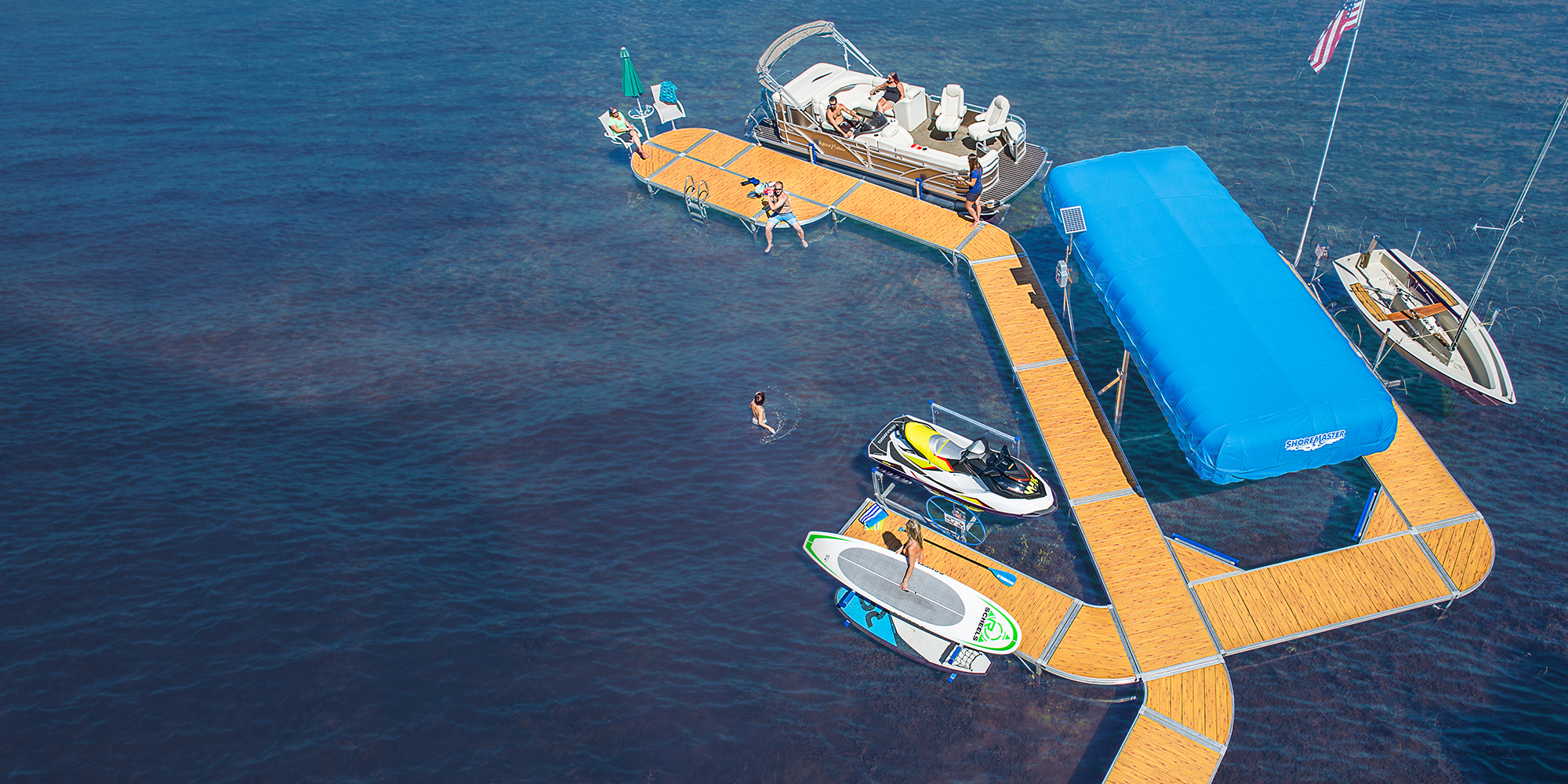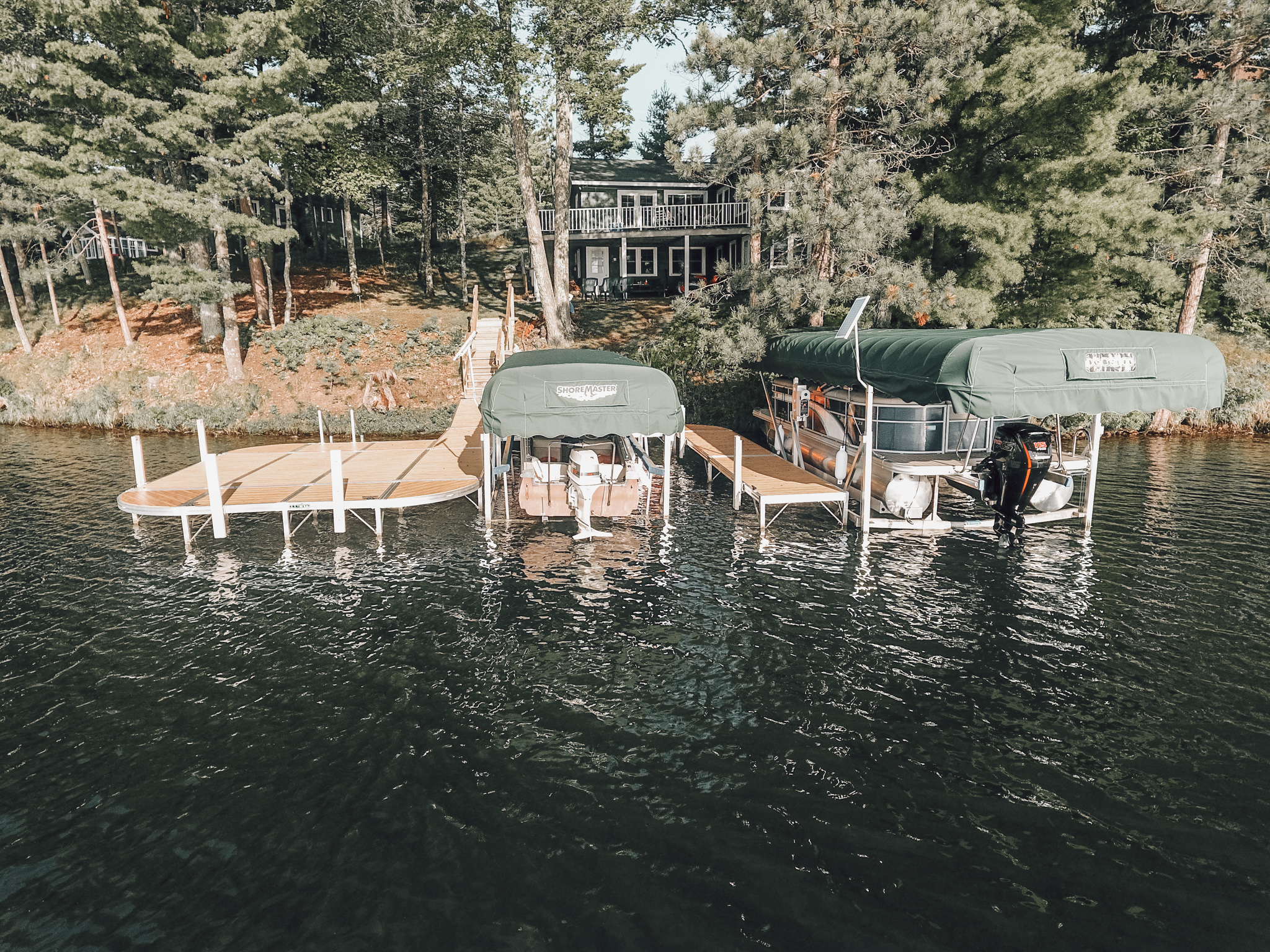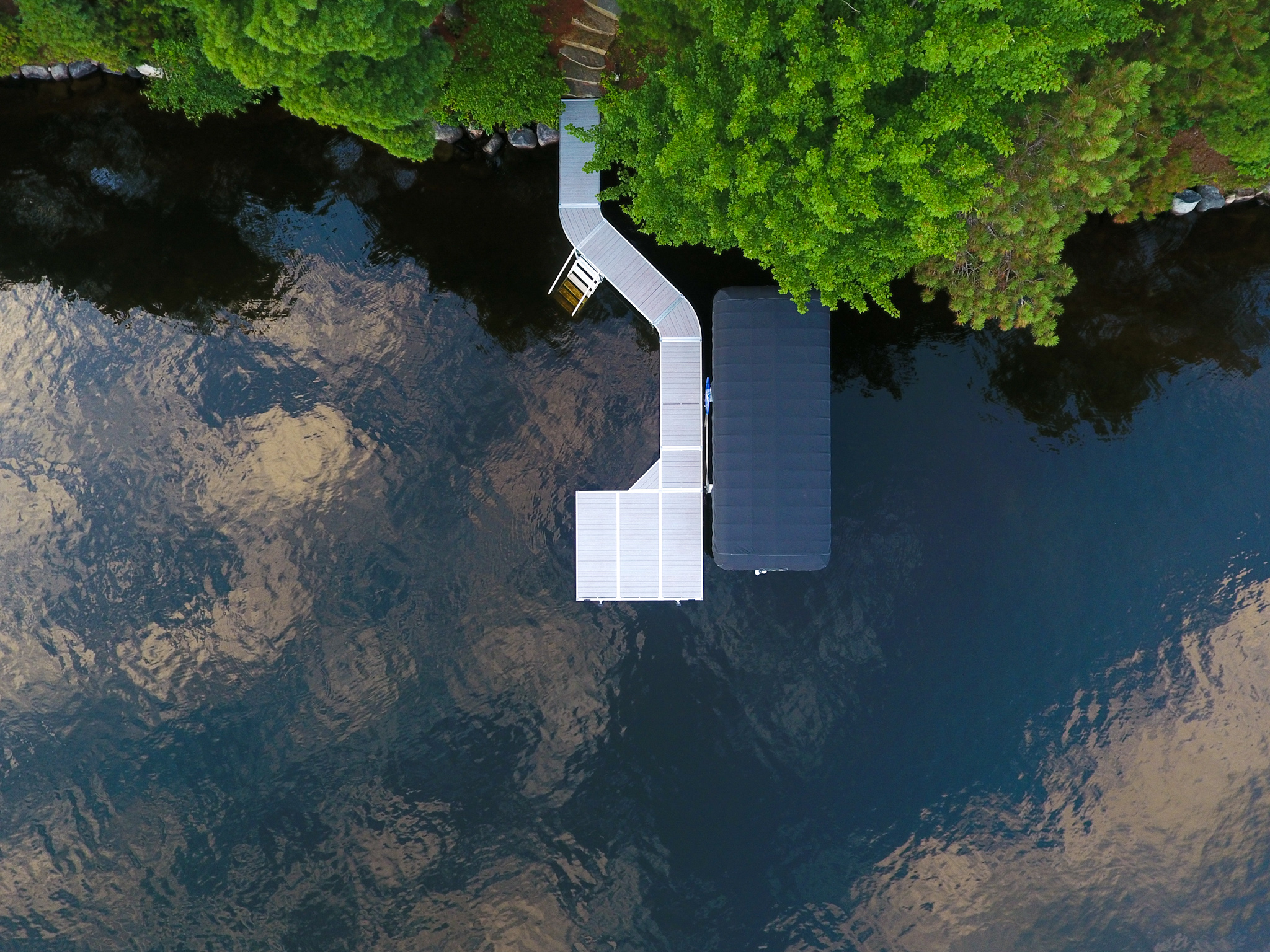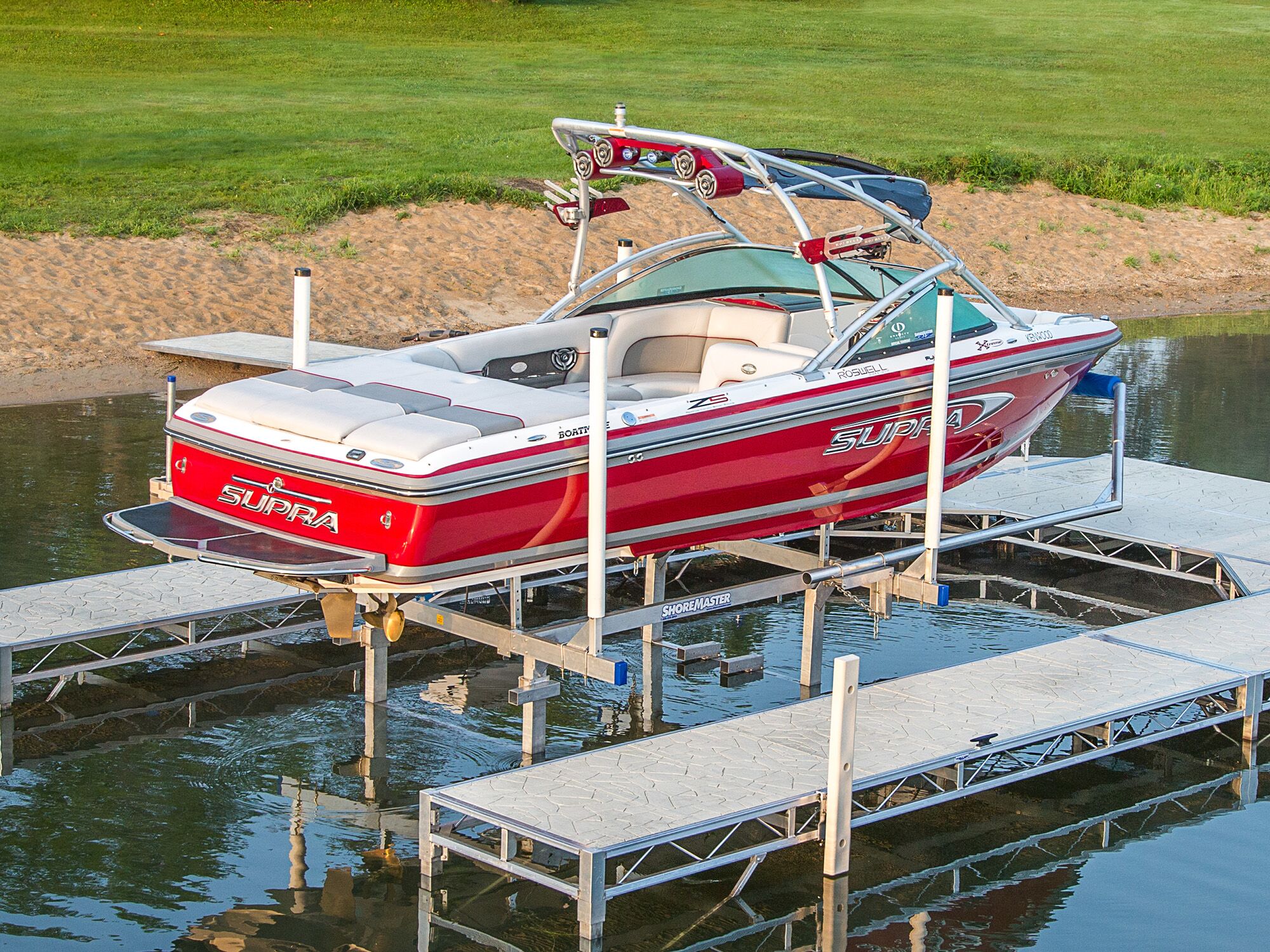Posted on July 23, 2020
Hurricane Boat Lift Issues and Checking for Dock / Lift Damage
Written by ShoreMaster Marketing
Your aluminum boat dock and lift are built to be out on the water in rough conditions for months or years at a time. However, when really bad weather hits, your boat dock and lift might get damaged. Whether you’re dealing with Midwest storms or hurricane season, really bad weather can damage your boat, boat dock, and lift, leading to costly repairs or replacements. Take some time to prepare for flooding and storms before they hit, and check for damage before you get back on the water.

Protect Your Dock and Lift Ahead of Time
Taking your boat off of your lift is the first step to preparing for a storm. If you can’t, raise it on the lift as high as you can, secure it to the lift, and remove any plugs so that excess water can drain out. If you can, get your boat off of your lift and ideally to an inland storage facility. Lower the cradle on the lift all the way to the bottom to keep it from swaying in the wind or being bumped into your dock by waves.
For saltwater shorelines, remove boat lift motors, switches, and covers and store them in a safe, dry place. Owners with sealed housing systems should also remove the gear unit to avoid saltwater collecting inside the housing. For all waterfronts, tighten the nuts and bolts on your system so you don’t lose any small parts in a storm.
Signs of Dock Damage
An aluminum boat dock is strong and easy to maintain, but that doesn’t mean you can take that for granted after a flood or storm: everything else about your waterfront depends on a strong, secure dock in good repair. Securing your boat and lift will help prevent damage, as well as regularly inspecting your dock for damage and making sure you know where your owner’s manual is. When inspecting your dock for damage, look for small issues that could turn into much bigger and more expensive ones later. Check on your hardware and cables, and replace anything that got damaged. If your dock has an electrical system, shut it off before inspecting it, and look for damage such as broken or loose cables, especially any that are in the water. Contact a licensed electrician to fix your electrical system if there are problems. Now is also a good time to look for damage on your dock ladder, dock lighting and the rest of your dock accessories.
Signs of Lift Damage
Once the flood or storm has died down, clear any debris off of your dock and lift. Look for bent or twisted beams, damaged drives, or broken bunks on your lift. Look for bent or damaged bolts and loose fasteners. Check the lift cables for kinks, abrasions, frays, or breaks, and do not operate your lift until those cables are repaired or replaced. If your lift shifted as a result of the storm, you’ll need to realign it and make it square: consult your installation manual or a marine contractor for more information about adjustments. Even if everything looks good, make sure that you perform a test run of your lift to check for more problems before you get back to boating.
Lake Dock Expertise and Ideas from ShoreMaster
ShoreMaster has been an industry leader in waterfront engineering and innovation for decades. You can be confident that our premium docks and boat lifts can stand up to all kinds of weather and that we have the expertise to answer your questions. For more information on what ShoreMaster has to offer and what would work best for your waterfront, get in touch with a local ShoreMaster dealer.



